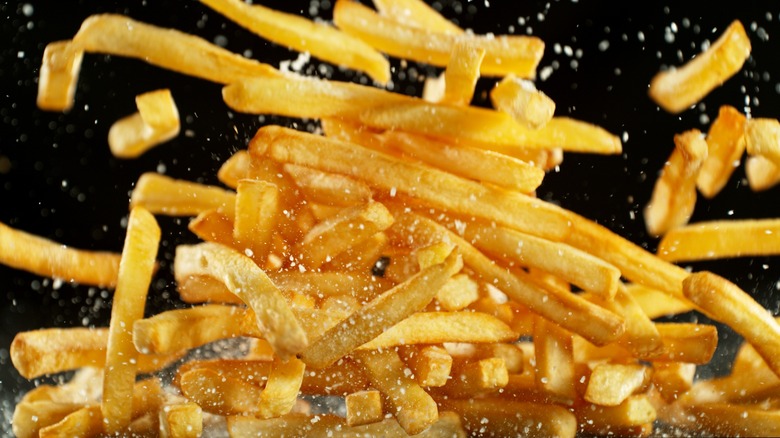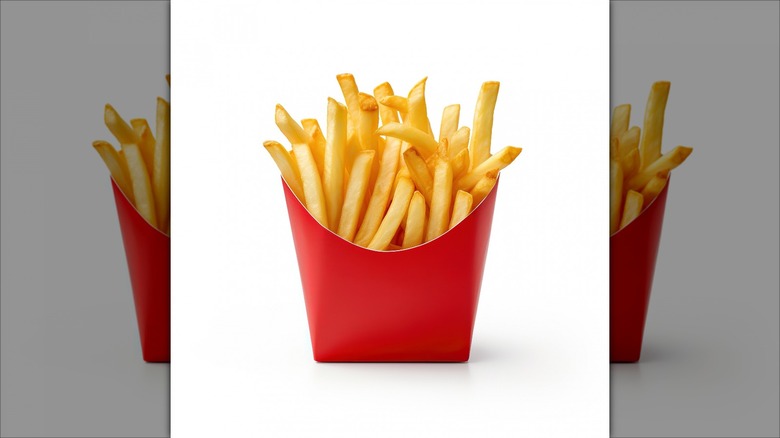How Long Should You Soak Potatoes When Making Fries?
If you're a DIYer in the kitchen, you may have experimented with making your own fries rather than heating up a bag of the frozen kind (although there's no shame in this since frozen fries can taste just as good as homemade ones). If so, you've undoubtedly heard that the best way to make them come out crispy is to soak them in water first. There's a long, science-y explanation for this, something about lowering the acrylamide content, blah blah blah. Acrylamide may sound like an ingredient in paint, but it's actually a kind of naturally occurring food starch, so the short version is, by soaking potatoes in water you're getting the excess starch out. Ironically, while laundry starch may stiffen a shirt collar, too much potato starch will make your fried potatoes go limp.
To pre-empt that disappointing limpness, you need to know the proper soaking time needed to get that pesky acrylamide out of your potatoes: 2 hours. There, now we can all go home. Wait, you want more context? Oh, alright. A study published in "Science of Food and Agriculture" (via Science Daily) says this soak time lowers acrylamide levels by 48%, but if you're in a hurry, 30 minutes takes out 38% of the starch, while a simple cold water rinse gets rid of 23%. While these results were only tested with fries cooked to a light golden brown, any inattentive cook knows that even un-soaked fries lose their limpness once they're literally burnt to a crisp.
Of course, some say no soaking at all is necessary
While some — okay, most — types of food taste better at sit-down restaurants than they do at the kind of establishments that have clown mascots and ketchup in plastic packets, french fries are a notable exception to the rule. This is one dish that fast food restaurants almost always get right, and McDonald's is still the undisputed master of the art. Would it surprise you, then, to know that Mickey D's doesn't soak its fries at all? Nope, as J. Kenji López-Alt discovered, the chain gets rid of excess starch by parboiling the potatoes in a solution of salt, vinegar, and water.
Of course, it's not nearly as simple as just slicing, freezing, and frying. López-Alt's painstaking reproduction of McDonald's french fries involves multiple steps: First, the fries are boiled, then they are dried and briefly fried at high heat. At this point, they're frozen before being fried for a final time. While the resulting fries are perfectly crispy, the process is admittedly a labor-intensive one. For similar results minus all of the prep work, you could always try our own copycat McDonald's fries recipe that starts with a bag of frozen fries and takes just two steps: Brine the potatoes, then fry them. No peeling, no chopping, no soaking, no problem!

